Association of 3D Armored Division Veterans
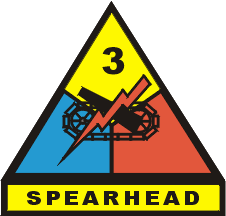
The 3d Armored Division in the Cold War
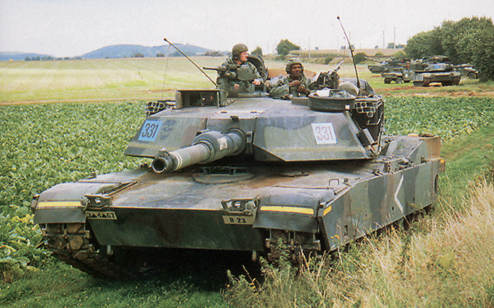
67th Armor tank in a field exercise. Courtesy of 3ad.com.
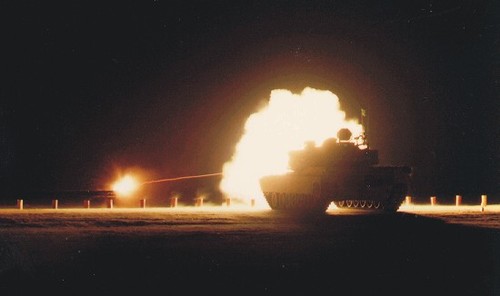
Night fire exercise. Courtesy of 3ad.com.
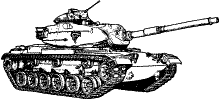


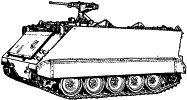
A Brief Narrative History…
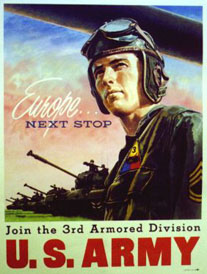 Following its unglamorous inactivation at the end of World War II, the 3d Armored Division was again called to service in the summer of 1947. This time not as acombat division but as a training center for army soldiers at Ft. Knox, Kentucky. The division served in this capacity for almost eight years, when on June 14, 1955 it was reorganized as a tactical division.
Following its unglamorous inactivation at the end of World War II, the 3d Armored Division was again called to service in the summer of 1947. This time not as acombat division but as a training center for army soldiers at Ft. Knox, Kentucky. The division served in this capacity for almost eight years, when on June 14, 1955 it was reorganized as a tactical division.
At the time of reorganization the Army’s divisions were organized according to the Pentomic Plan to make the units more survivable on the nuclear battlefield. This however was not the case for the Army’s armored divisions which retained their WW II Combat Command structure with four battalions each of armor and infantry. The newly reorganized 3d Armored Division was given the task of being combat ready by 1 May 1956. It met this challenge and exceeded the expectations of everyone involved.
In 1956 the Division left Brooklyn Army Terminal and sailed for Germany to relieve the 4th Infantry Division as the first division to participate in ” Operation Gyroscope”, an Army program of rotating entire divisions as opposed to individual soldier replacements. Appropriately the division headquarters traveled on the USNS Maurice Rose, named for our famous WW II Commander who was killed in action leading the Spearhead Division near Paderborn. On May 12th Combat Command A arrived as the first major element of the division. The 3d Armored Division established its presence on Kasernes in Frankfurt, Hanau, Gelnhausen, Budingen, Friedberg, Butzbach, and Kirch Göns. These locations placed the Spearhead Division astride the Fulda Gap, an ancient invasion route into central Europe.
In 1957 the division’s combat arms battalions were redesignated according to the Combat Arms Regimental System (CARS). This system was designed to perpetuate the lineages of the historic regiments that were broken up into independent battalions during or after WW II. Under CARS all combat arms battalions were affiliated with a parent regiment.
On October 1, 1958 the most famous of all Spearheaders joined the division as a Private in Headquarters and Headquarters Company, 1st, Battalion, 32d Armor. Private (later Sergeant) Elvis Presley served out his military obligation as a regular soldier in the division until his honorable discharge in March of 1960. His movie G.I. Blues made later that year was based partly upon his experiences and there are scenes featured that are from the division areas.
In 1963 the Spearhead was given a major facelift when it was reorganized under the Reorganization Objective Army Divisions (ROAD). The Change replaced the combat commands with brigade headquarters and the number of maneuver battalions increased to six armor and five infantry battalions. During the Vietnam Era while the army was bled white through a ten year war of attrition, the Spearhead Division continued to train for its mission to defend in the Fulda Gap. The division, like all its European counterparts, struggled to present a creditable defense as more and more experienced soldiers were sucked into the black hole of Southeast Asia.
With the end of the Vietnam War and the draft, the 1970’s brought new challenges to the division. The army was in a transition as it reformed itself to an all-volunteer force. The decade was dominated by cleaning up the problems brought on by the protracted war in Vietnam. Training at Grafenwöhr, Hohenfels, Wildflecken, and in NATO exercises such as REFORGER continued to keep the division busy as its presence continued to deter Soviet aggression.
The 1980’s was a tremendous decade for the division and changed its character in many ways. The Army finally fielded the new equipment that it had been developing since the end of the Vietnam War. Another reorganization initiative called Division 86 added an Aviation Brigade to the organic Spearhead organization as well as substituting a battery of the Multiple Launch Rocket System (MLRS) in place of the General Support (GS) 8-inch howitzer battalion. The M1 Abrams tank, M2 Bradley Fighting Vehicle, M3 Cavalry Fighting Vehicle, AH-64 Apache helicopter, and MLRS truly modernized the fire power of the division.
Also during this decade the division’s subordinate units again changed designations as the army adopted the U.S. Army Regimental System (USARS). Designed to foster esprit de corps and a sense of continuity, USARS was meant to give soldiers recurring assignments with different battalions of the same regiment. Units were redesignated to align units in the continental U.S. with units stationed overseas. In doing this, the historic relationships between divisions and regiments were often broken. The regimental alignments meant that Spearhead soldiers would primarily rotate between Ft. Hood, Texas and Germany. A small minority, those aligned with the 18th Infantry would rotate between Ft. Benning, Georgia and Germany.
In 1986 the division said farewell to 2-33 Armor which had served with 1st Brigade for 23 years. The battalion’s personnel left Germany for Ft. Hood where they were assigned to the 1st Cavalry Division. In turn the 1st Cavalry transferred 2-5 Cavalry (an armor battalion) to the Spearhead Division. This COHORT rotation was similar to the Gyroscope except it was done at battalion level. 2-5 Cavalry only served with the division for three months before it was reflagged as 4-32 Armor under USARS.
On 19 June 1987 a Spearhead Unit did what no other Army unit had ever done. 1st Platoon, Company D, 4-8 Cavalry (an armor battalion previously designated as 3-33 Armor) won the Canadian Army Trophy (CAT). The CAT competition is like the America’s Cup of Tank Gunnery, it pits tank platoons from all of the NATO countries against each other in a competition that covers several days. It was a great moment for the Army, the M1 tank, and the Spearhead Division.
Veterans’ Day Weekend 1989 began the end of an era when the Berlin Wall finally came down. This event signaled the coming end of Soviet dominance in Eastern Europe as well as the downsizing of its military. Soviet military reductions precipitated the draw-down of the U.S. Armed Forces, eventually spelling the end of the mighty Spearhead Division, but not before the division carried out one more mission in the sands of the Arabian Desert as part of the U.S. VII Corps during Operations Desert Shield and Desert Storm.
| pdf file: You need Adobe Acrobat Reader (version 7 or higher) to view this file. Download the free Adobe Acrobat Reader for PC or Macintosh. |
